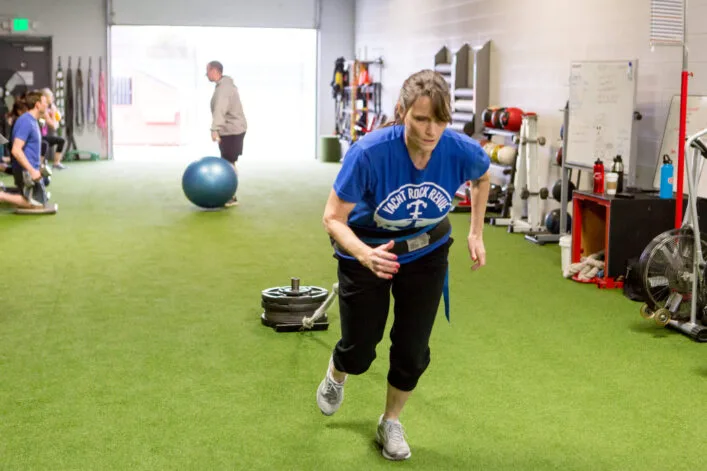Constructing Training Programs for Those in Persistent Pain
The Gray Area between Performance Enhancement and Rehab
When it comes to training programs, the fitness industry tends to focus on either enhancing performance or rehabilitating injuries. But what about those who are in persistent pain, somewhere in between these two extremes? As trainers, we have an opportunity to help individuals improve their fitness and well-being, even in the presence of ongoing pain. While we may not have a definitive solution to fix pain or injuries, we can utilize our knowledge of movement biomechanics, progressive overload, and exercise modification to create customized training programs that support people’s goals.
Reframing Performance: A Mindset Shift
Traditionally, trainers are advised to refer clients in pain to physical therapists. However, many of our clients have already sought help from medical professionals and are still looking to improve their fitness. It’s time for a mindset shift in our approach. Instead of fixating on pain, we can help clients manage it within the larger context of their fitness journey. By emphasizing what they are capable of achieving and reframing their experiences, we can empower them to focus on progress and improvement.
Utilizing Adaptive Upside Training
Strength training can benefit individuals with persistent pain, but we need to ensure that the training program has the most adaptive upside for them. Adaptive upside training aims to improve strength, endurance, speed, and power while considering and managing movement quality. By providing clients with a variety of movement options and utilizing appropriate modalities, we can minimize pain symptoms and maximize gains. It’s essential to find positions and exercises that clients can execute safely and comfortably, reducing focal loading on joints and tension throughout the body.
Choosing the Right Training Modalities
The gym can be intimidating for clients in pain, so it’s crucial to validate their fears and redefine what strength and conditioning mean for them. Ground-based and bodyweight exercises can generate sufficient stimulus to improve fitness levels for many clients. Machines may be a great option for others, offering controlled and safe intensity. Additionally, utilizing other training modalities, such as sleds or assisted exercises, can provide additional support and variety. Flexibility and creativity in designing training programs are key.
Coaching Strategies for Success
As coaches, we can teach our clients mindfulness techniques, segmentation methods, and reframing strategies to help them manage pain, stay motivated, and navigate stressful situations. Mindfulness practices build awareness and help clients focus on the present moment. Segmenting training goals into smaller, achievable steps improves motivation and reduces stress. Reframing pain as something to be managed rather than avoided helps clients adopt a more positive perspective. Separating identity from painful sensations and using language that acknowledges but does not define the pain experience is also beneficial.
In Conclusion
Our role as coaches is not to solve pain but to support individuals in managing and thriving despite their pain. By creating customized training programs and implementing effective coaching strategies, we can help our clients improve their fitness, well-being, and overall quality of life. It’s essential to foster a mindset shift, use adaptive upside training, choose appropriate training modalities, and provide coaching strategies that empower our clients to change their narrative and embrace their fitness journey.
Source: Reframe Pain: Keep Your Clients Working Out…Even When They Are In Pain







